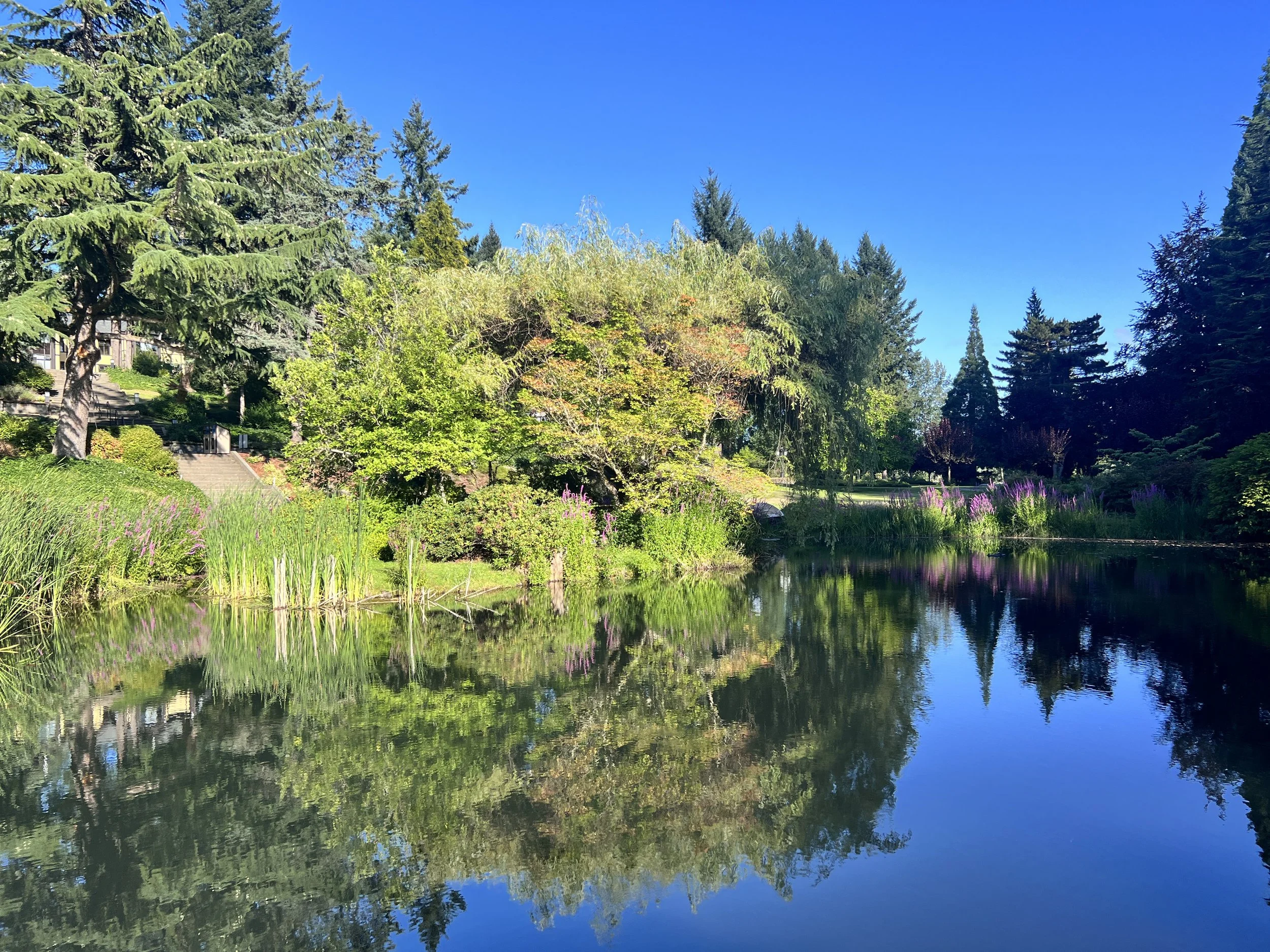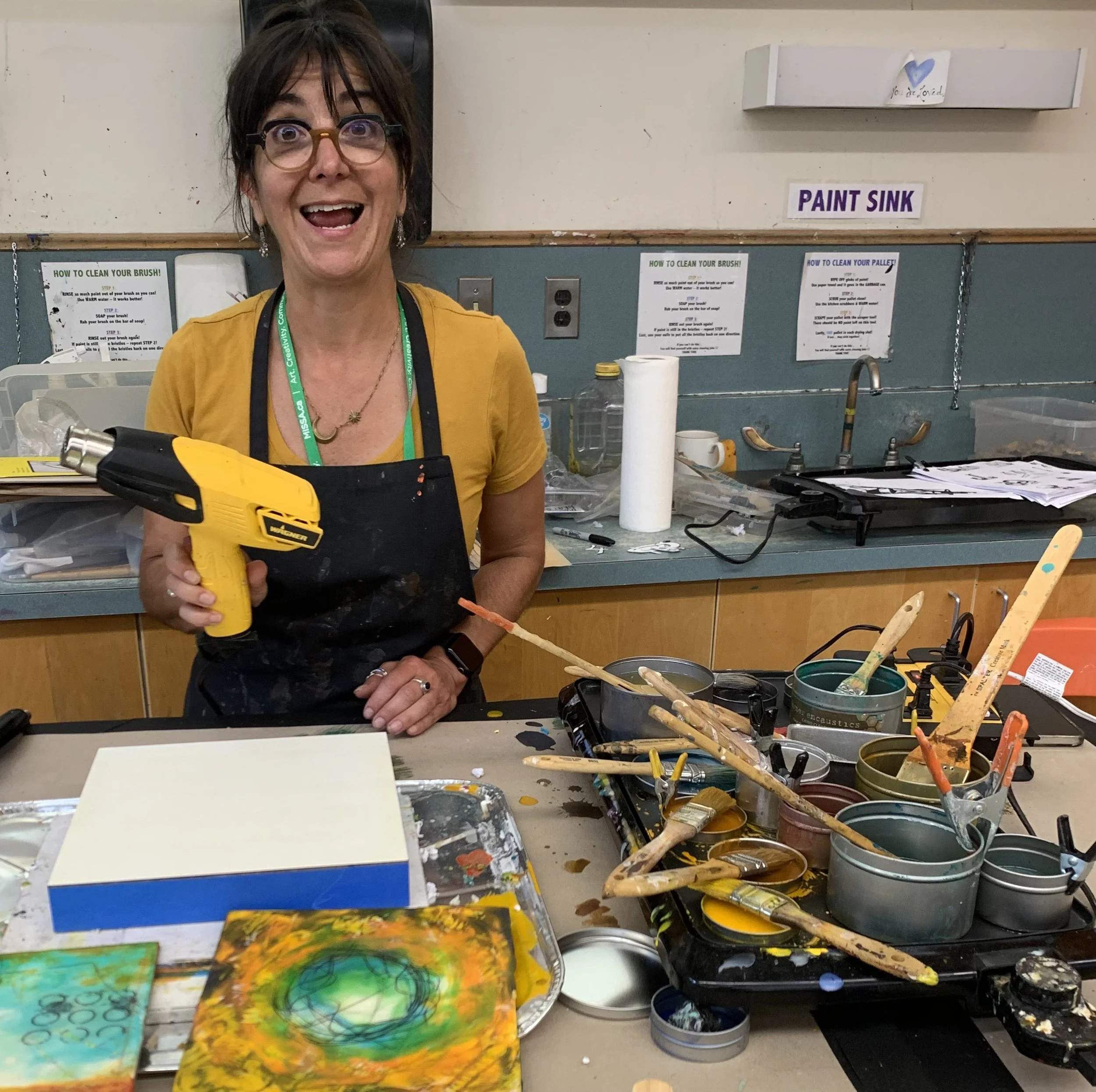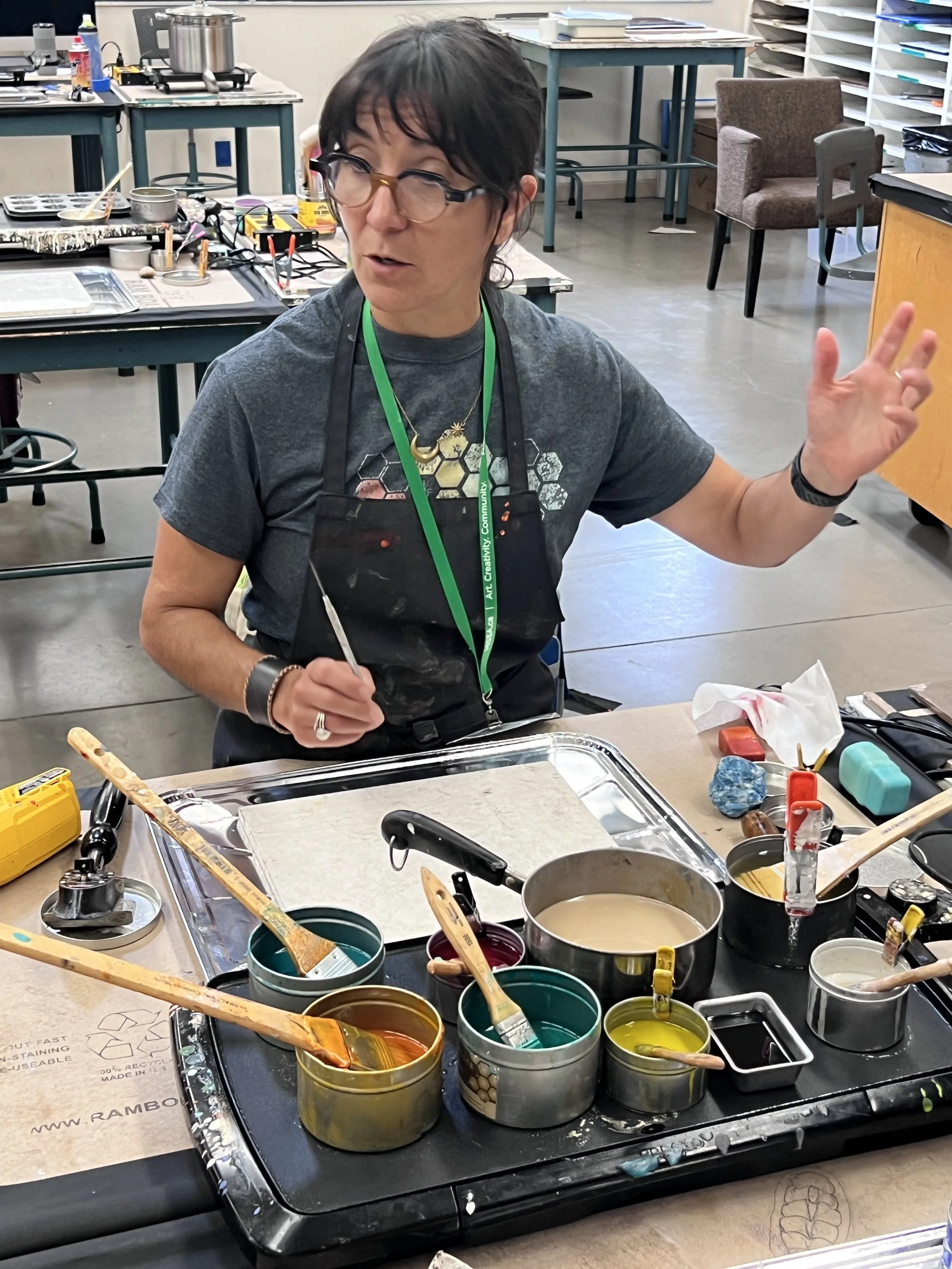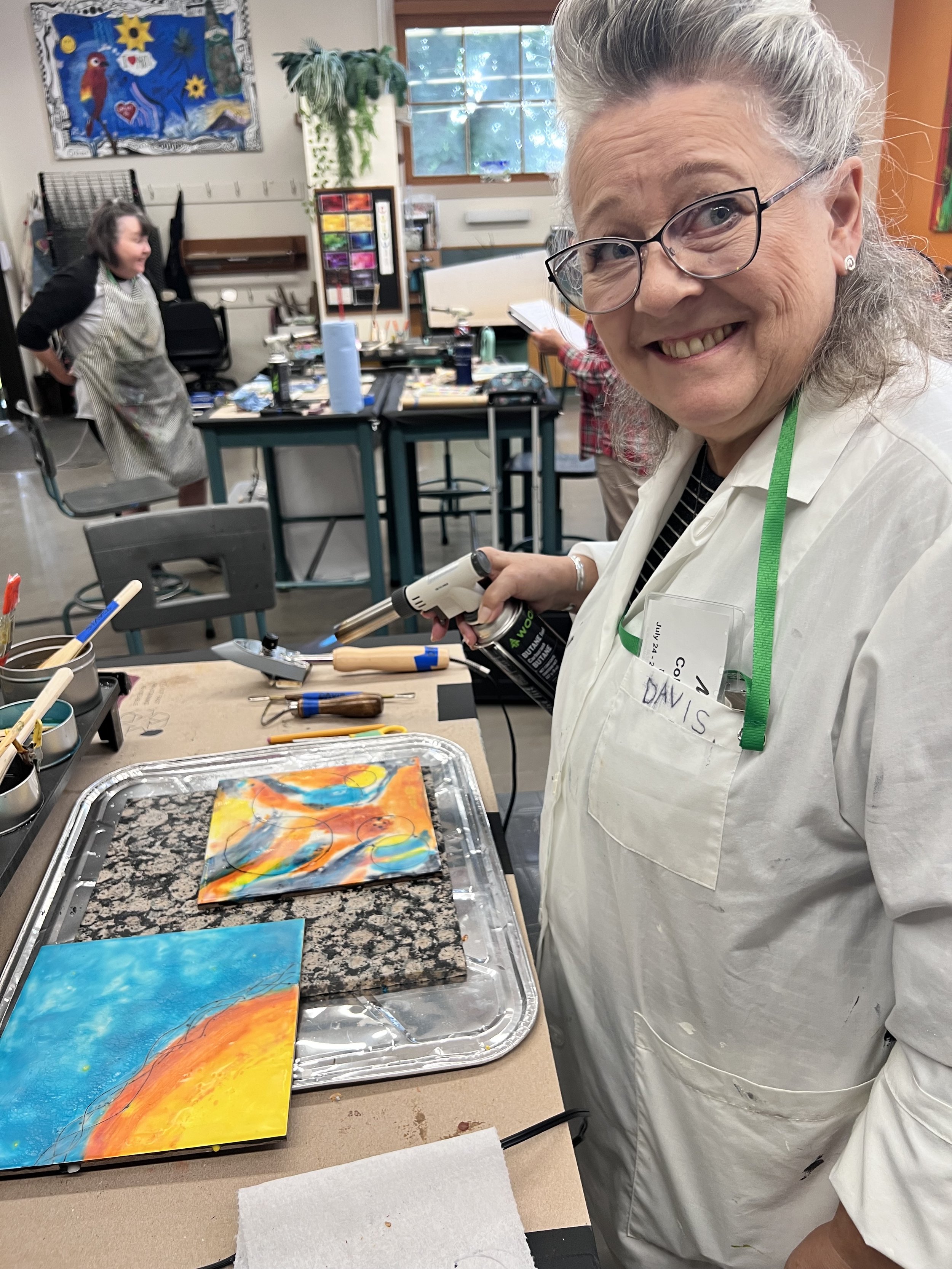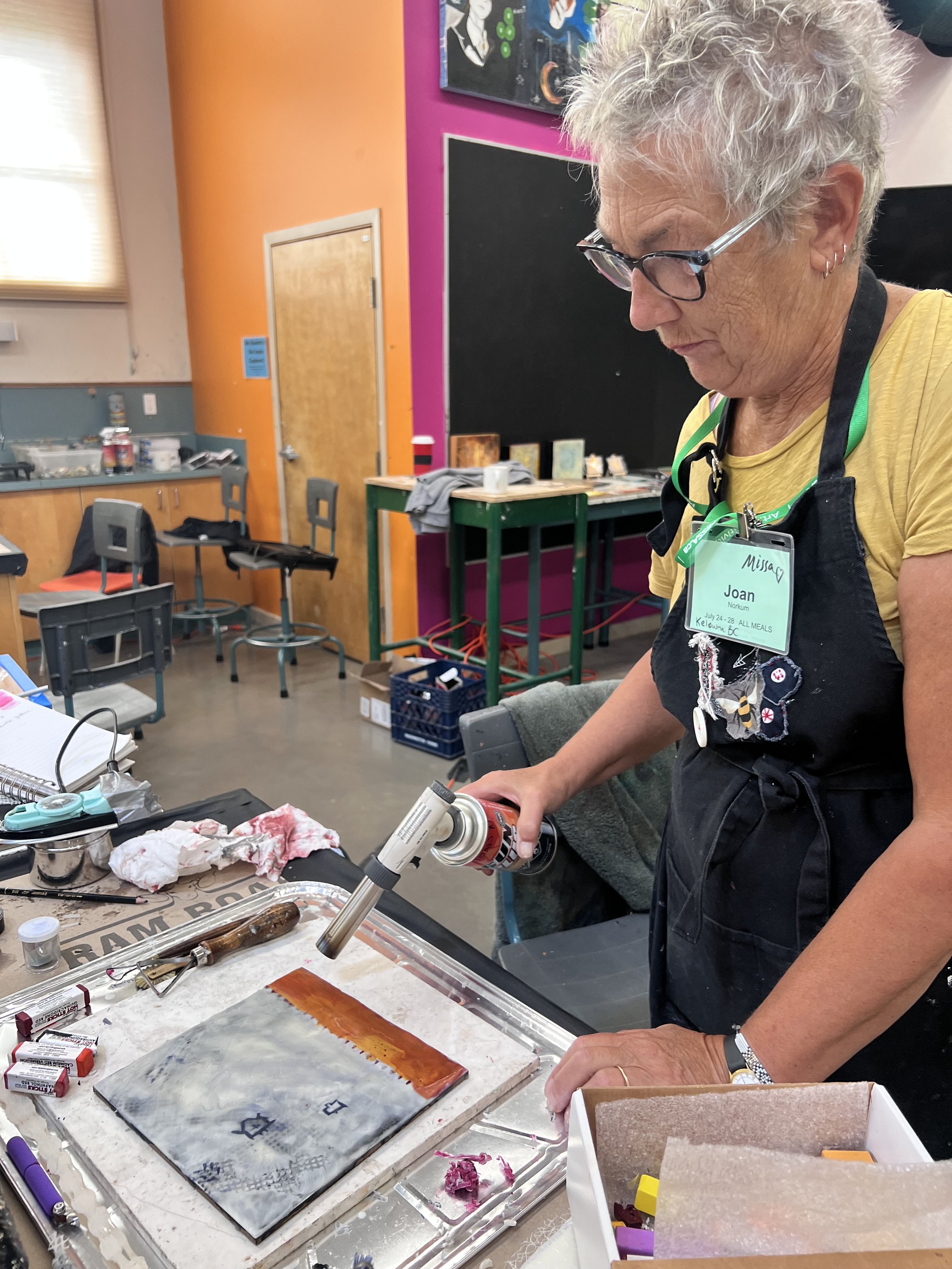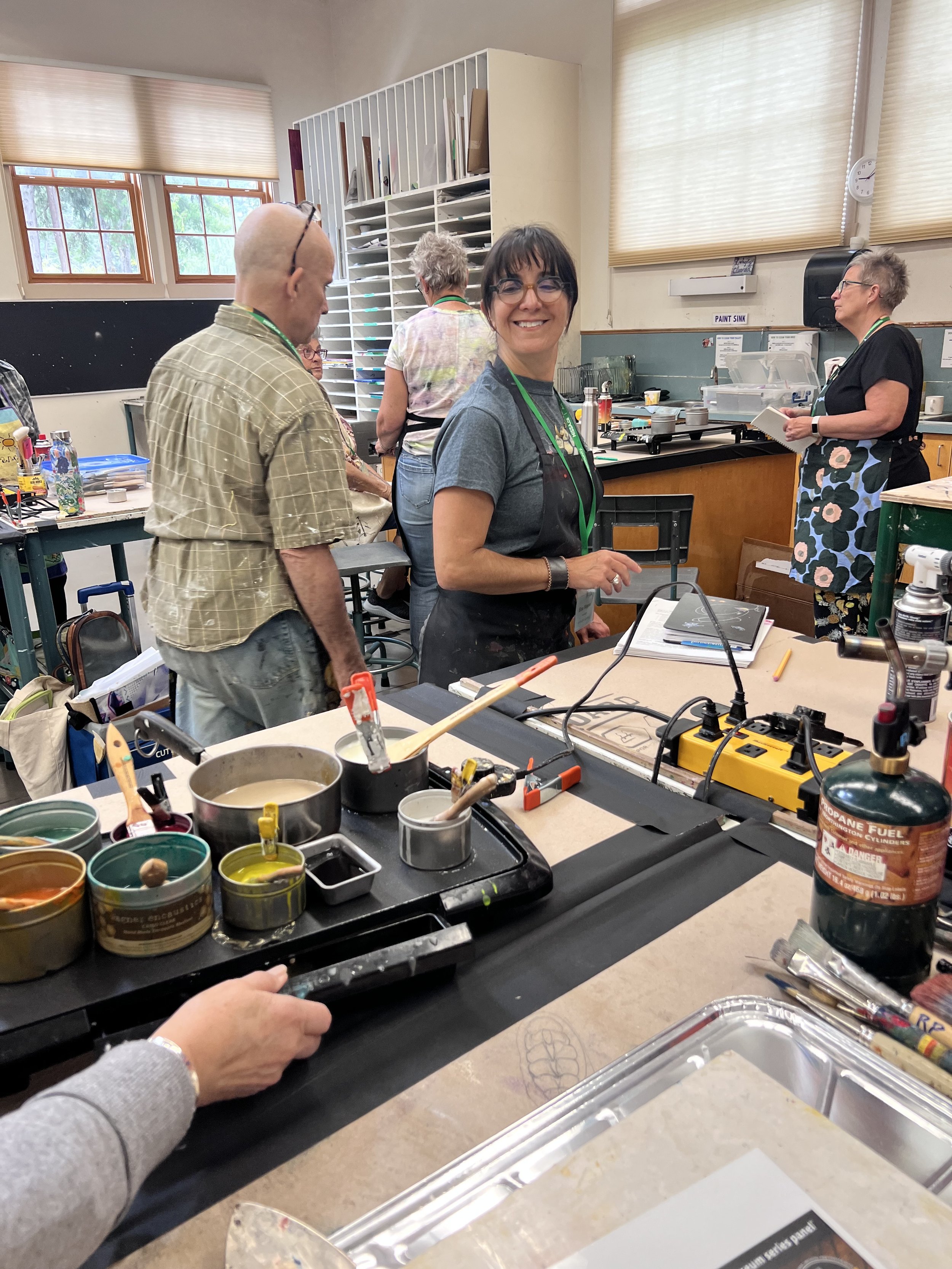The Challenges and Rewards of Teaching Encaustic Painting
Last week, I wrapped up a 5-day encaustic painting workshop at Metchosin International Summer School of the Arts (MISSA) in Victoria, B.C. My work takes me to some pretty fun places! But, to be completely honest, after returning for Astoria Open Studios Tour, which was well underway, I’m exhausted, but in a good way. I went from one nurturing group of women to my friends and secret elves Ren and Sharon who helped prepare my studio and welcome guests!
My class at MISSA had twelve students and it took place at the bucolic campus of Shawnigan Lake School, a 300 acre international boarding school for grades 6-12. This was the largest group I had taught in a while. Several of the students had years of experience using the medium along with some newbies. This range of experience levels created some initial challenges but developed into a wonderful micro-community by the end of the week. We enjoyed homemade brownies and Twizzlers every day at 2:30 and I was so pleased that the experienced students muttered “mind blown”, more than once! I even got the gift of a jar of home made honey from Ladysmith! One day, my back started hurting and students came to my rescue with back treatments they travel with. Such a kind and caring group of students! The class was listed as Intermediate / Advanced. Initially, a large encaustic painting workshop posed additional challenges such as managing any electrical breaker issues that come up in a class of this size. When this happened however, I had a very capable tech assigned, the awesome Colleen, who was taking care of it all in the background. Everyone worked together so beautifully!
These days, I have to be more selective about how often I take time off site from the studio to teach, but its important to me that I continue to share the love of this ancient painting technique with the world.
Teaching encaustic painting is a unique and rewarding experience that allows me to share my passion, discoveries and knowledge with others, but I’m rethinking my approach. In this blog, I’ll delve into the challenges and rewards that come with teaching encaustic painting, and how it can transform both the teacher and the students.
1. The Challenge of Technique Mastery:
Checking the wax temperature, achieving smooth surface while also learning or revisiting the use of a blow torch, and understanding layering techniques can be overwhelming. However, these challenges serve as opportunities to open up for growth and discovery. I myself have always come away learning something from my students. It makes me happy to see some of the color and layering techniques applied in their class work.
When I began learning about encaustic painting in 1994, it was out of a desire to learn a material that could quite literally deepen my oil paintings. Its adherent nature lends itself well to a host of approaches from collage to sculpture. Encaustic paint is warm, it changes before your eyes, its seduction elicits and embraces the creativity right out of you or, at least a good many. There is a meditative and alchemical aspect to the medium of encaustic painting. Its natural and forgiving nature aids greatly in opening our creative sensory channels.
Encaustic painting requires a deep understanding of materials, tools, and techniques. As a teacher, mastering these aspects is crucial to effectively guide my students. It was not until I was working with the medium for two years, in 1996, that I taught my first encaustic workshop called The Encaustic Epicure at the local art supply store, Art Media. Some of students from then are still getting my emails! I thank you all! So, teaching encaustic painting evolved with me and with my work. Since then, I continued learning and then adding and sharing those discoveries with painting and print in my workshops.
What I love most about teaching is sharing what I have discovered over the course of my particular wax journey.
2. Creating a Safe and Inspiring Learning Environment:
Teaching encaustic painting goes beyond the technical aspects. It involves creating a safe and inspiring space for students to explore their creativity. Part of creating a safe environment addressing physical issues of safety. Proper ventilation through the use of fans or vents and being aware of working with heated tools is very important. And, if you are working with powdered pigment, you should always wear a respirator, tape down extension cords. Safety comes before encouraging experimentation, espcially when teaching larger groups. This awareness fosters a sense of community and looking out for one another.
3. Sharing the Joy of Discovery:
One of the most rewarding aspects of teaching encaustic painting is witnessing students' excitement when they unlock new creative possibilities. Introducing them to unique techniques, heat guns, butane torches, irons and writing tools or embedding objects within the wax, can spark their imagination and open up a world of endless artistic exploration. Catering to students' diverse skill levels and learning styles can be demanding, but witnessing their progress and newfound confidence with a tool they have never tried before makes it all worthwhile. Seeing their delight as they discover the transformative qualities of encaustic painting is truly gratifying.
4. Cultivating a Connection to History and Tradition:
Teaching encaustic painting provides an opportunity to connect students with an ancient art form that dates back to the Egyptians and Greeks. Sharing the history, techniques, and cultural significance of encaustic painting enriches the learning experience and fosters a deeper appreciation for the medium. As a teacher, being able to preserve and pass on this traditional art form to future generations has been an invaluable reward.
.
5. Continuous Learning and Growth:
Teaching encaustic painting is an endeavor that demands both technical expertise and a nurturing spirit. Overcoming the challenges of technique mastery, creating an inspiring learning environment, sharing the joy of discovery, cultivating a connection to history, and experiencing continuous personal growth are the rewards that have made it all worthwhile. Through teaching, I feel I am a catalyst for creativity, empowering others to express themselves through this ancient and captivating medium.
Learning encaustic painting also requires a certain amount of artistic knowlege that I bring to my students with regards to color, composition and design. Each class brings new challenges and discoveries. Engaging with students of diverse backgrounds and experiences offers fresh perspectives and insights. The joy of witnessing their unique interpretations and individual artistic voices emerge motivates me to stay curious, adapt my teaching methods, and continue my own artistic development.
Thanks for reading and be sure to see my current workshop offerings by visiting the in-person and online workshops page! And look for the release of my NEW “Encaustic Painting Basic” On-Demand Video Course, coming September 2023!

